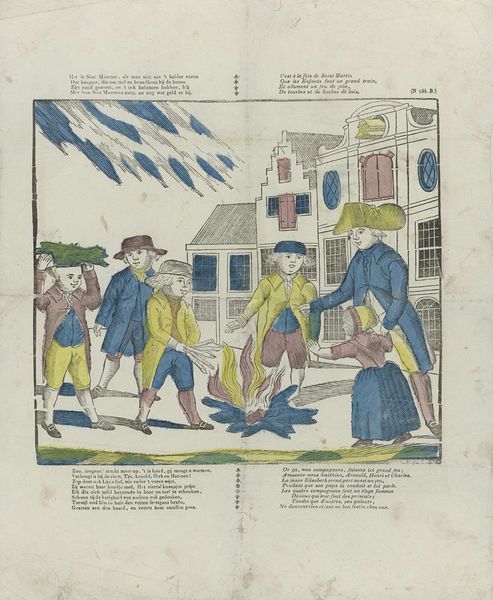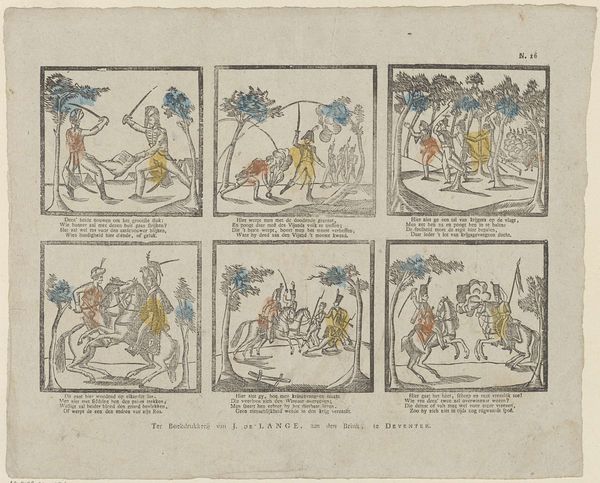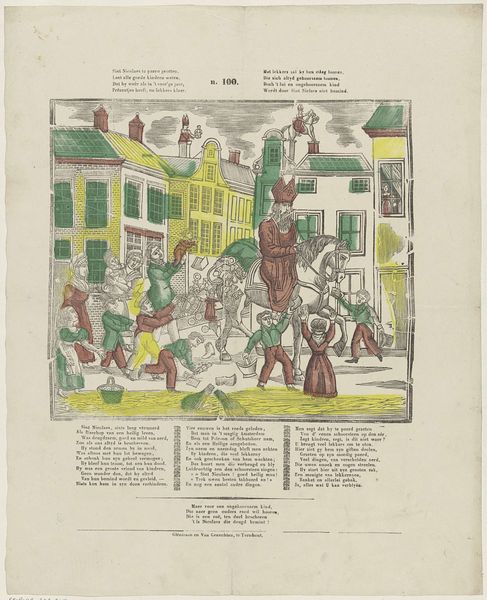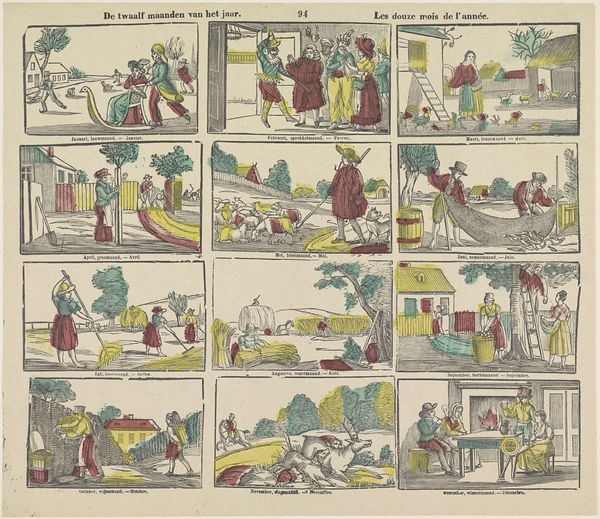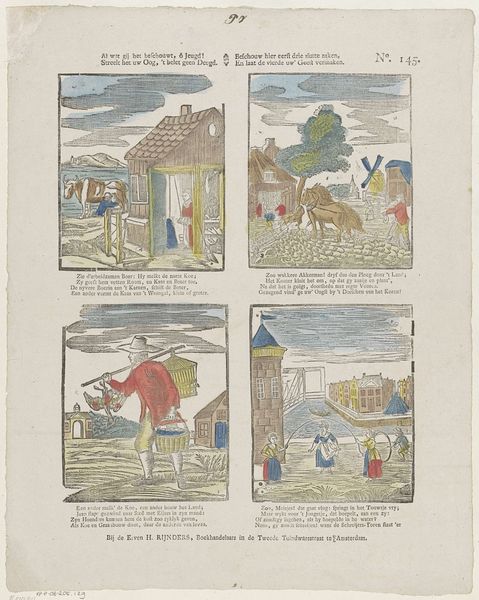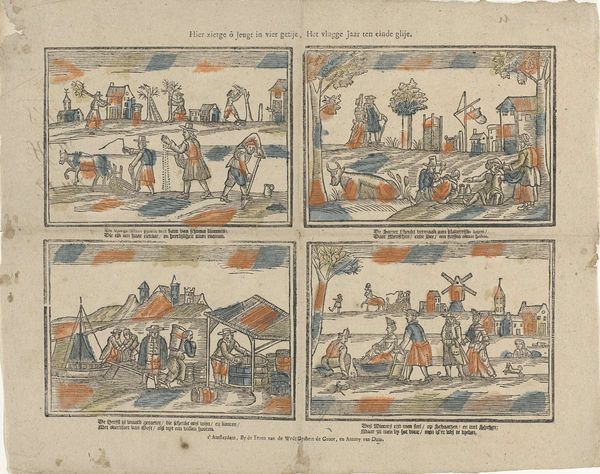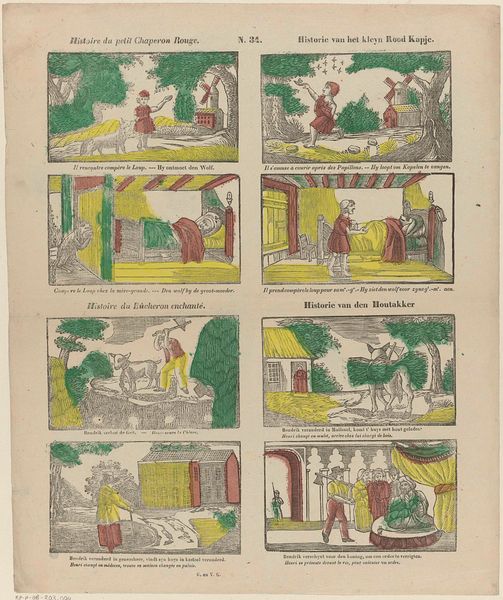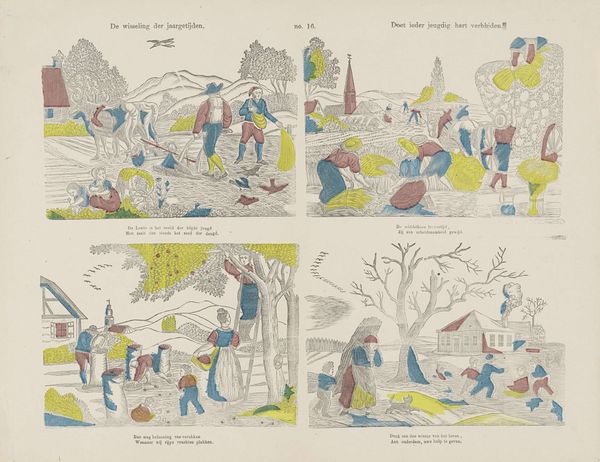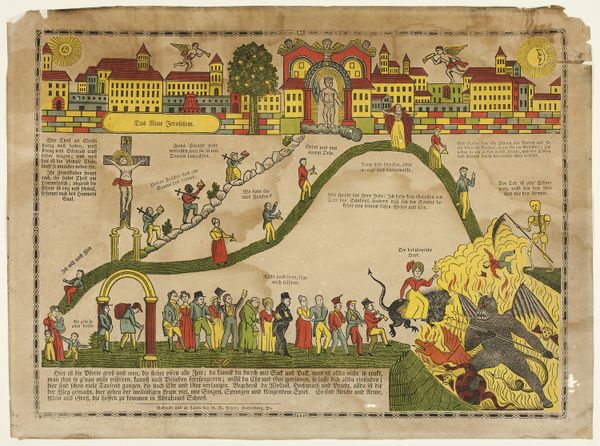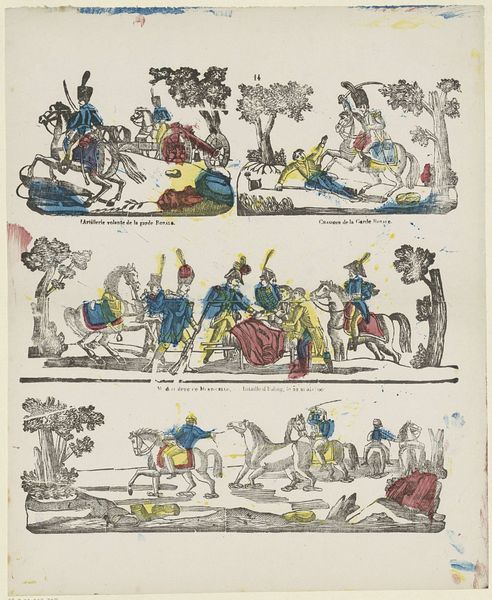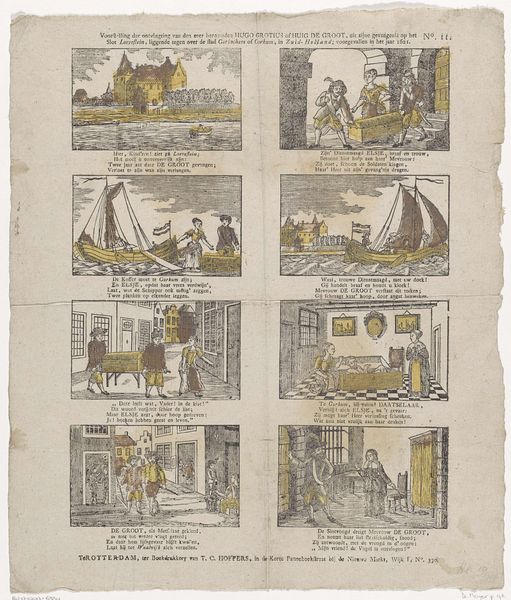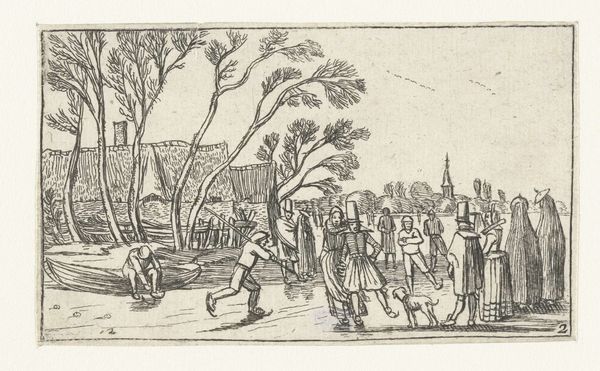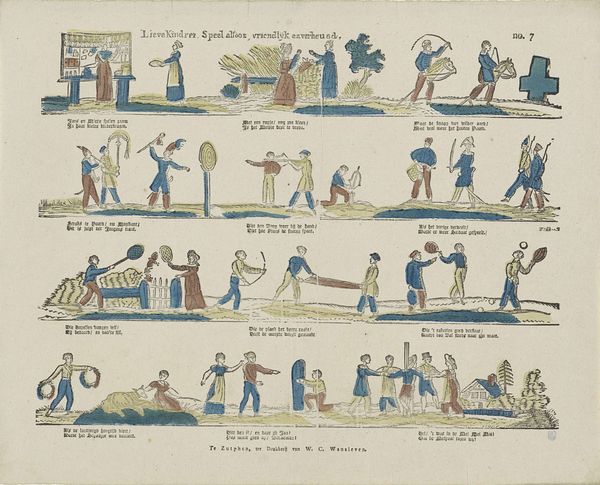
lithograph, print
#
lithograph
# print
#
landscape
#
folk-art
#
genre-painting
Dimensions: height 323 mm, width 391 mm
Copyright: Rijks Museum: Open Domain
Editor: This is "De boeren hofstede," a lithograph print from somewhere between 1848 and 1881, housed here at the Rijksmuseum. The scene depicts what I think is supposed to be an idealized, charming farmstead. But honestly, the inconsistent use of color and somewhat awkward rendering of perspective creates this very dream-like, almost surreal effect. What do you see in it? Curator: Precisely. Notice how the picture plane is treated as a series of discrete units rather than a unified field. Observe the spatial relationships - how they are rendered almost irrelevant through inconsistencies in scale and perspective. Take, for example, the rendering of the figures. Do you observe the seemingly arbitrary assignment of colors? Editor: Yes! The blue used on the people, it's almost as if the artist was less concerned with representing reality and more interested in creating patterns and visual rhythm. Curator: Precisely. The lithographic process allowed for the replication of line and form, however, the application of color suggests an almost diagrammatic approach. Rather than imitative, the colors function to articulate distinct areas within the overall composition. Note how the artist directs the gaze through contrasting hues and values. Is the eye led into depth or rather across a constructed surface? Editor: Definitely across. It feels very flat. This color-coding divides the scene rather than unifying it. Curator: Exactly. This subverts traditional notions of depth and perspective. We could see the artwork, therefore, not as a representation, but as a sign, a construction whose internal logic supersedes any impulse toward mimesis. The scene becomes about signs, forms, colors and construction and invites a contemplation of artifice rather than nature. Editor: That makes so much sense! I initially saw it as slightly naive, but I realize it is much more than that. Thank you! Curator: My pleasure. Thinking about it as a construction makes the work that much richer and helps understand art's historical progression away from simple mimetic strategies.
Comments
No comments
Be the first to comment and join the conversation on the ultimate creative platform.

